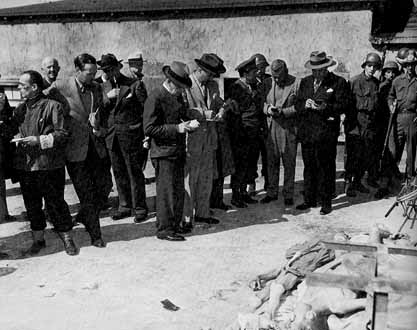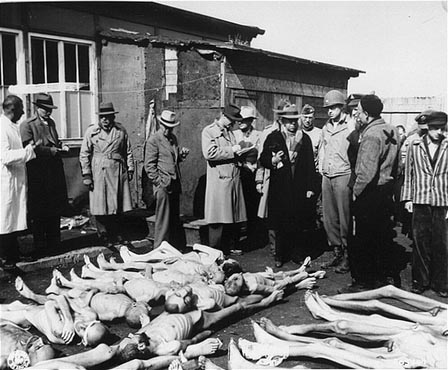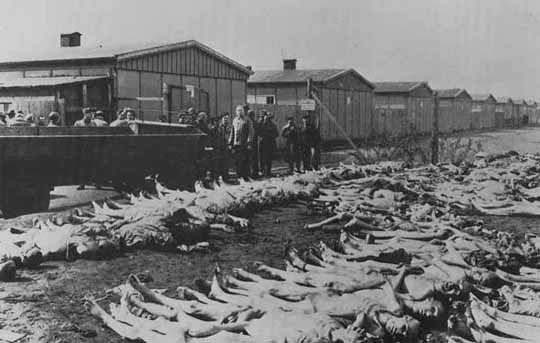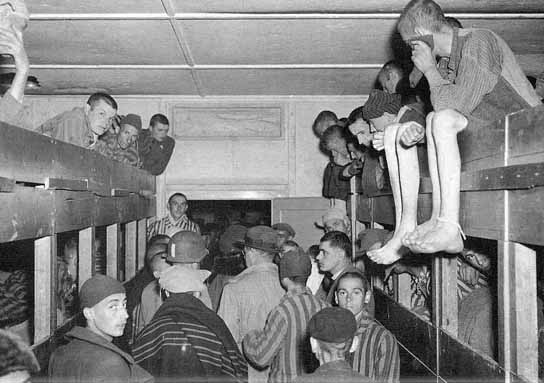Media coverage of Nazi camps"We are constantly finding German camps in which they have placed political prisoners where unspeakable conditions exist. From my own personal observation, I can state unequivocally that all written statements up to now do not paint the full horrors. In view of these facts, you may think it advisable to invite 12 congressional leaders and 12 leading editors to see these camps. If so, I shall be glad to take these groups to one of these camps. Such a visit will show them without a trace of doubt the full evidence of the cruelty practiced by the Nazis in such places as normal procedure." General Dwight D. Eisenhower, telegram to US Chief of Staff Marshall, 19 April 1945.  Even before Dachau was liberated on April 29, 1945, reporters including Edward R. Morrow had visited the infamous camp at Buchenwald on April 15, 1945 and reported on atrocities such as the lamp shades made from human skin that were found in the home of Ilse Koch, wife of the former Commandant. America's best press photographer, Margaret Bourke-White, took photographs at Buchenwald which were published in Life Magazine on May 7, 1945. After Eisenhower suggested that the horror camps should have full coverage by the press, a group of prominent newspaper reporters toured Buchenwald on April 25, 1945. A delegation of US Congressmen flew to Paris on April 22, 1945 and visited Buchenwald on April 24, 1945, almost two weeks after the camp had been liberated on April 11th. This congressional delegation arrived in Dachau on May 1, 1945, the same day that newsreels were released in American theaters, showing the Nazi atrocities at Buchenwald and Bergen-Belsen. When a group of newspaper reporters arrived at Dachau on May 3, 1945, there were still more than 100 inmates dying each day of typhus and the bodies of the emaciated victims of this disease were spread out on the ground, although all the soldiers who participated in the liberation described seeing bodies "stacked like cordwood." The camp had been placed under quarantine on May 2nd because it was a health hazard, but reporters and congressmen were doused with DDT from a spray gun to protect them from the lice that spreads typhus. By the middle of May, everyone in America knew about the Nazi atrocities. If they didn't know what the American soldier was fighting for, now at least they knew what he was fighting against, to paraphrase a famous quote by General Eisenhower. General Eisenhower had visited the Ohrdruf forced labor camp on April 12, one day after the liberation of Buchenwald, but he never saw Buchenwald or Dachau. In his autobiography, "Crusade in Europe," he didn't even mention the gas chambers in the Nazi camps.    Howard Cohen's Account of the LiberationMarguerite Higgins' Account of the LiberationBack to Liberation of DachauBack to Table of ContentsHome |